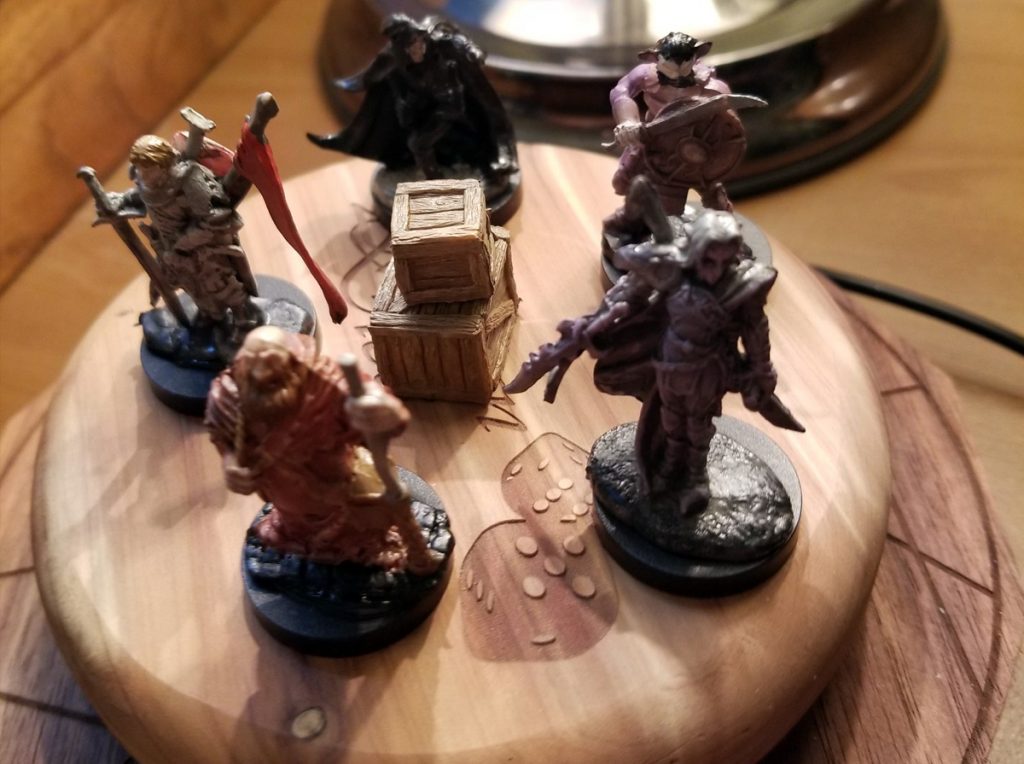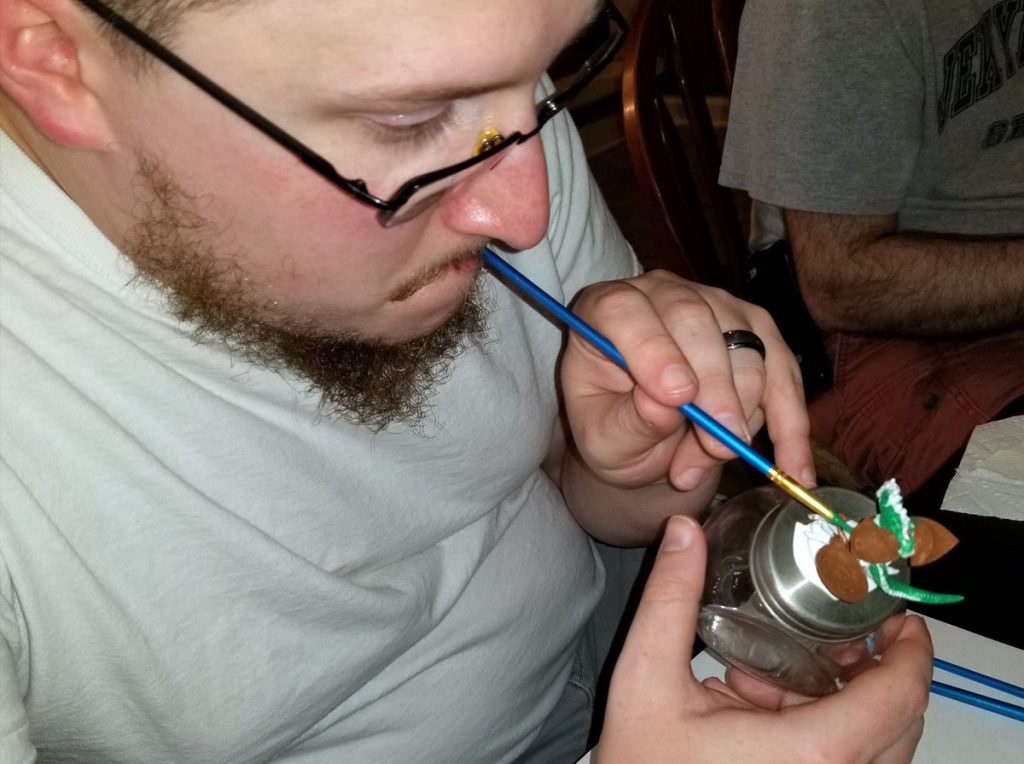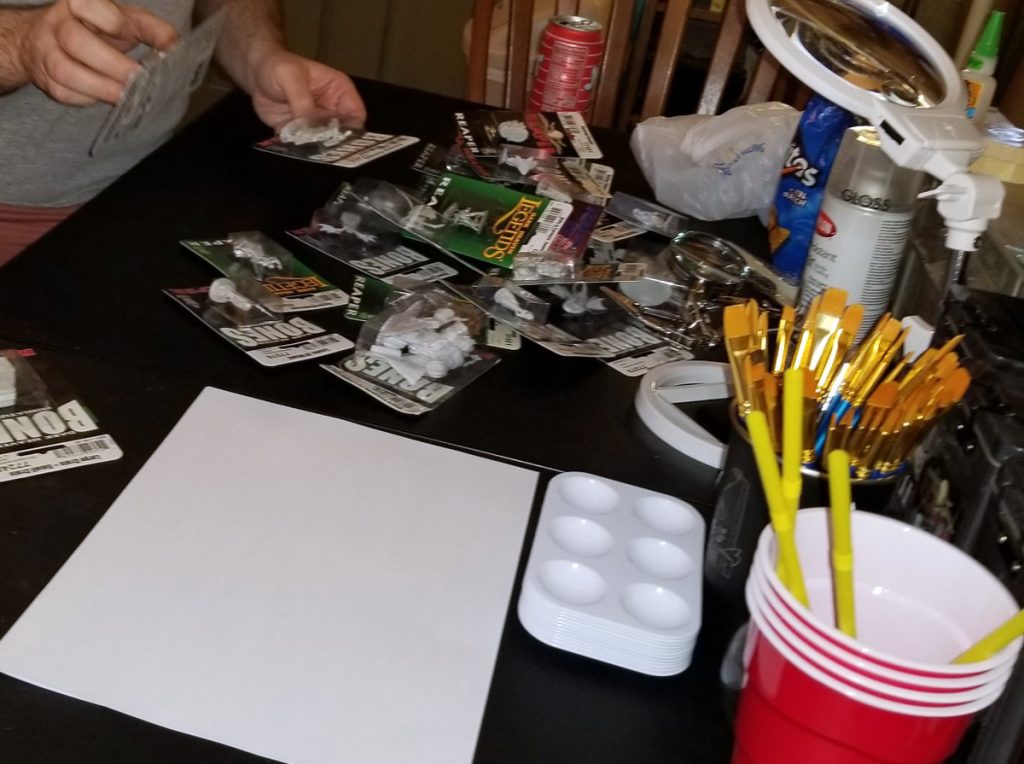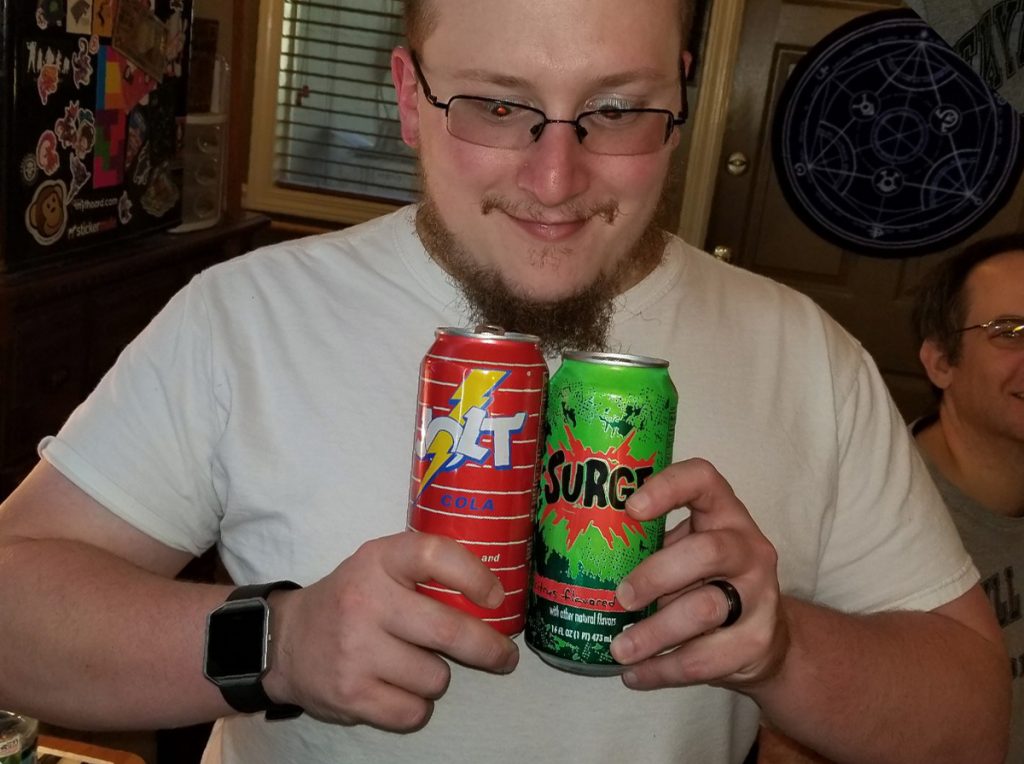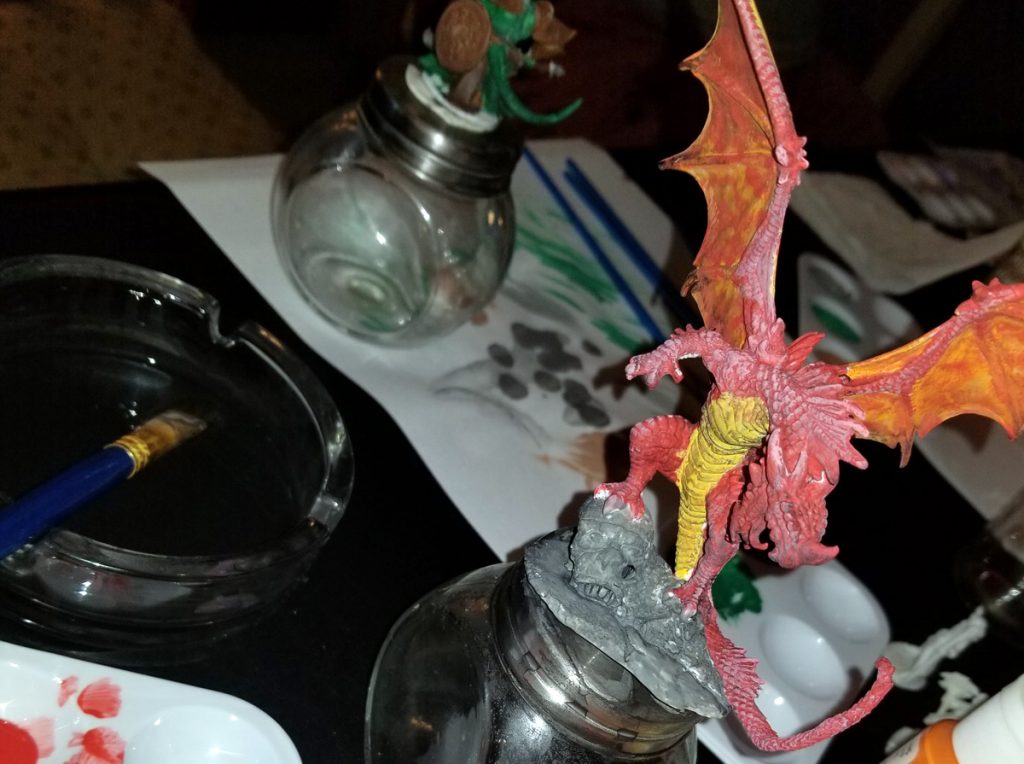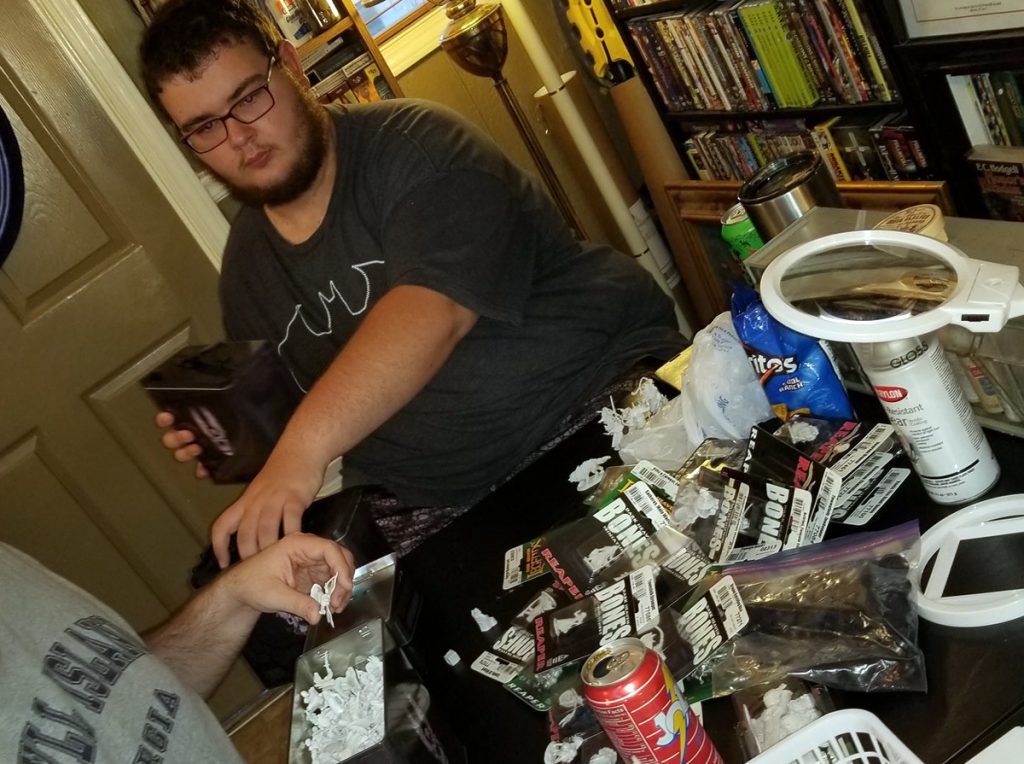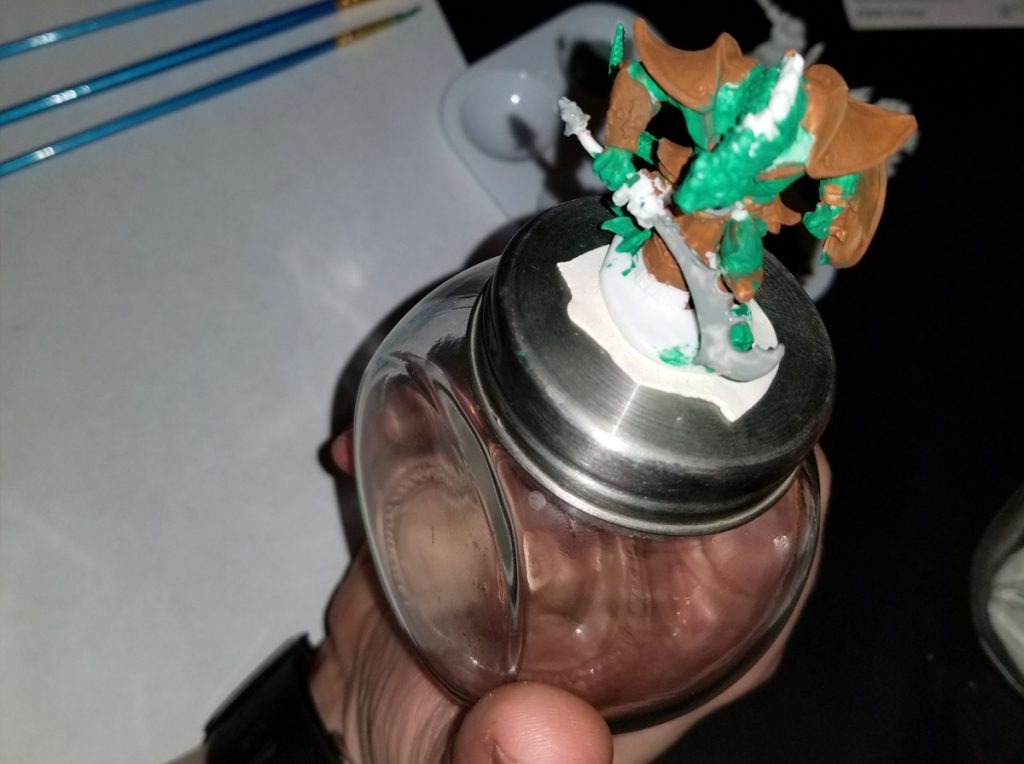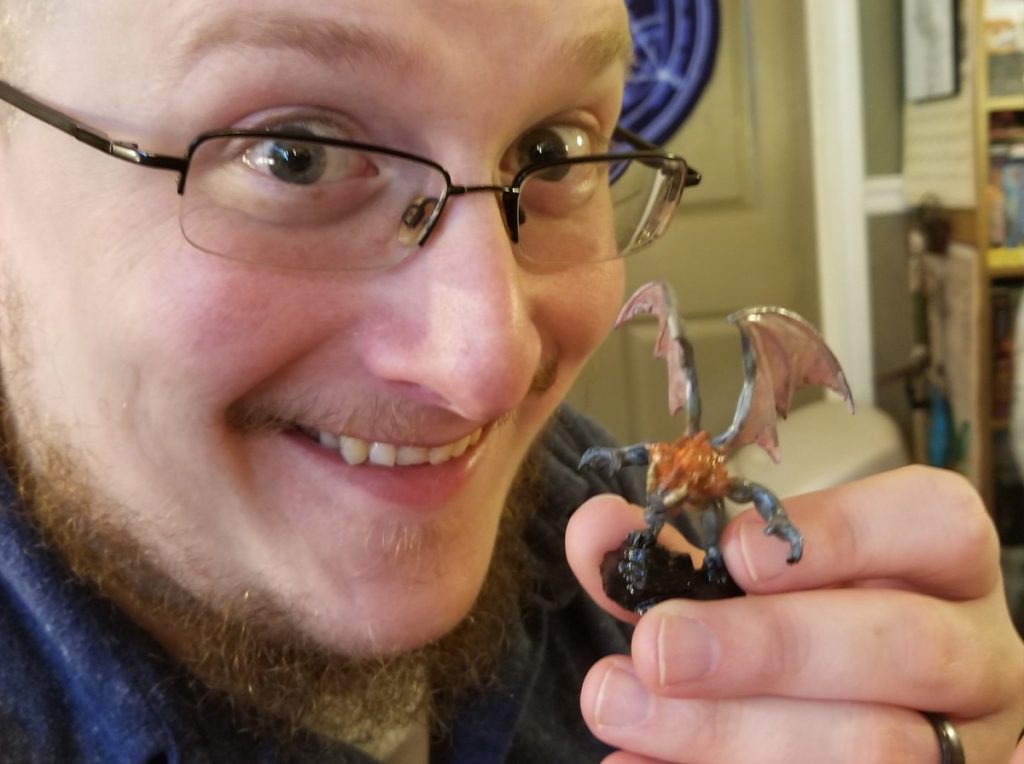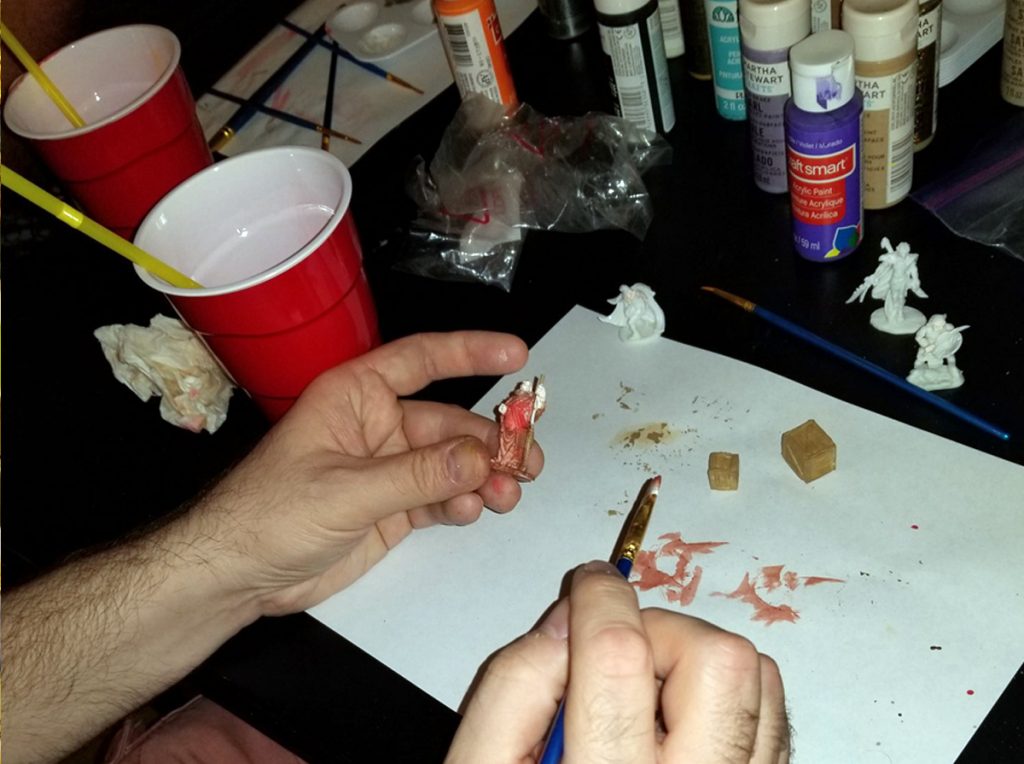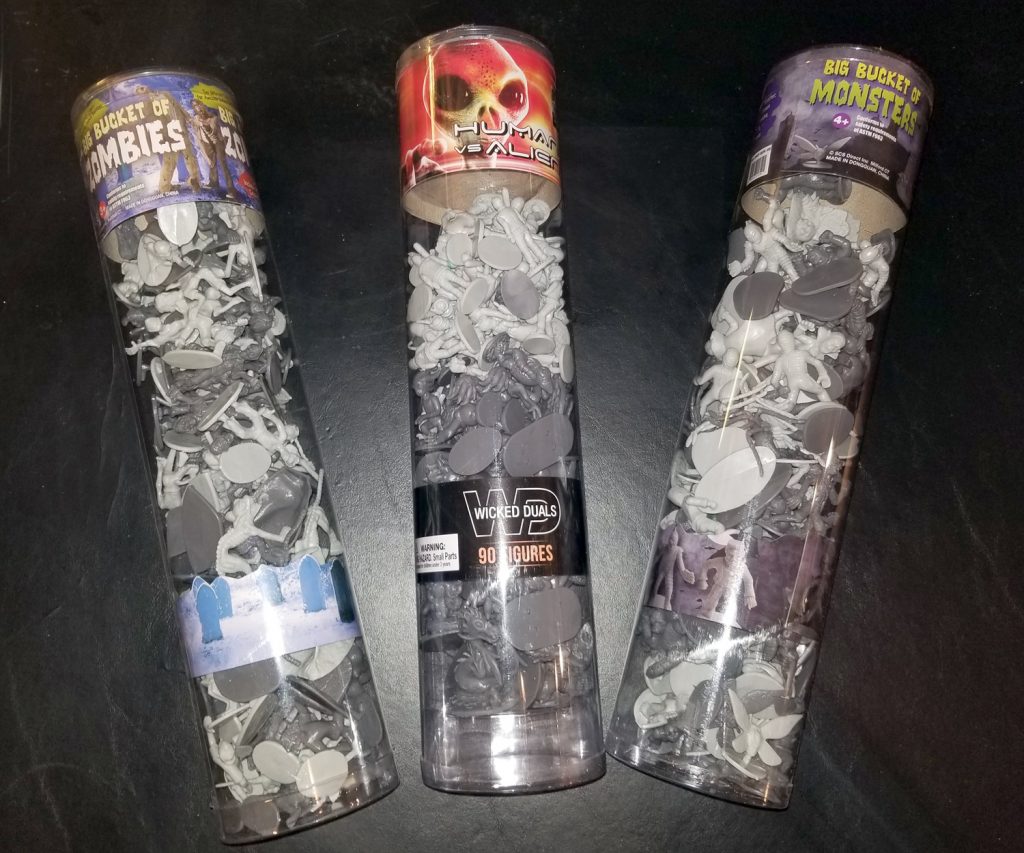I’ll be the first to admit that my talents do not currently reside in the arena of miniature painting. Despite my lack in skill and experience, I still quite enjoy the process. I find it an amazing stress reliever and distraction when I need to “touch grass” but don’t actually want to. The level of focus it requires to try to detail the pieces tends to occupy the moment.
Most of my attempts I feel like are on par, maybe even slightly better than, the pre-painted miniatures on the market. I enjoy using them at the game table. It’s a fun activity, and a great way to express a bit of creativity when what my brain is telling me to simultaneously relax and get focused.
The Evil Eye & Frigid Gaze of the Levistone Guardian
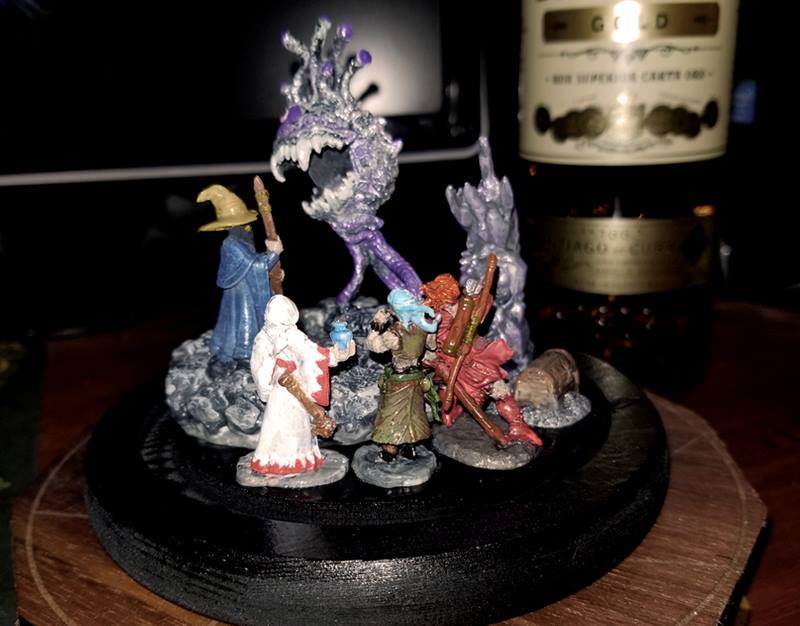
Simple Final Fantasy diorama I made kitbashing then painting some Reaper Bones. Fighter, thief, white mage, and black mage fighting a beholder. Yep, that’s right, FF1 had beholders, though it was changed in later releases to account for TSR’s intellectual property.
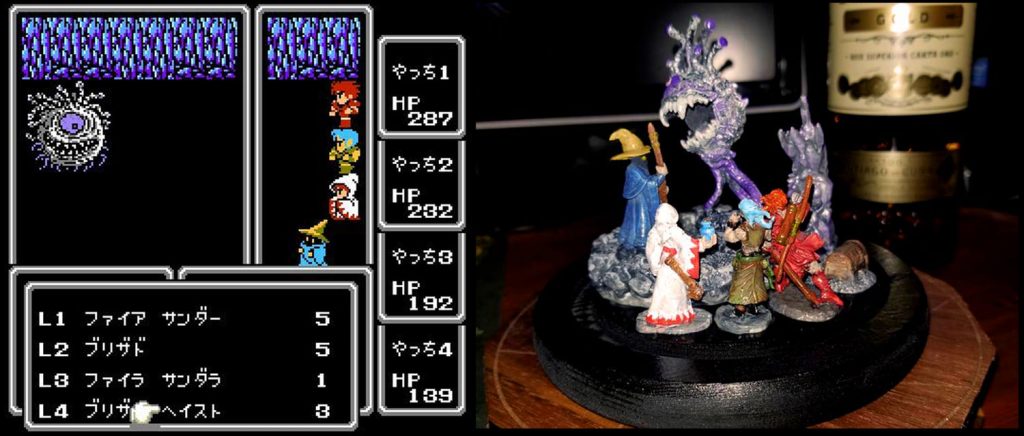
Stress Relief Through Painting Tiny Worlds
This is a general gallery of miniature painting I've done, most of these originated from the Reaper Bones sets that I accumulated over several Kickstarters.
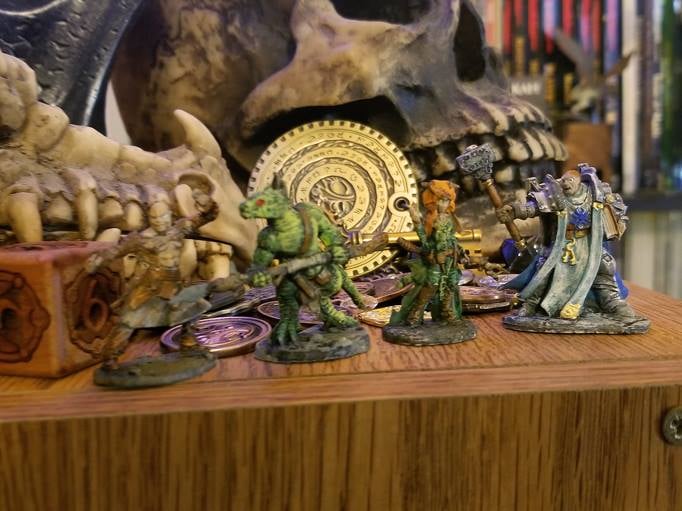
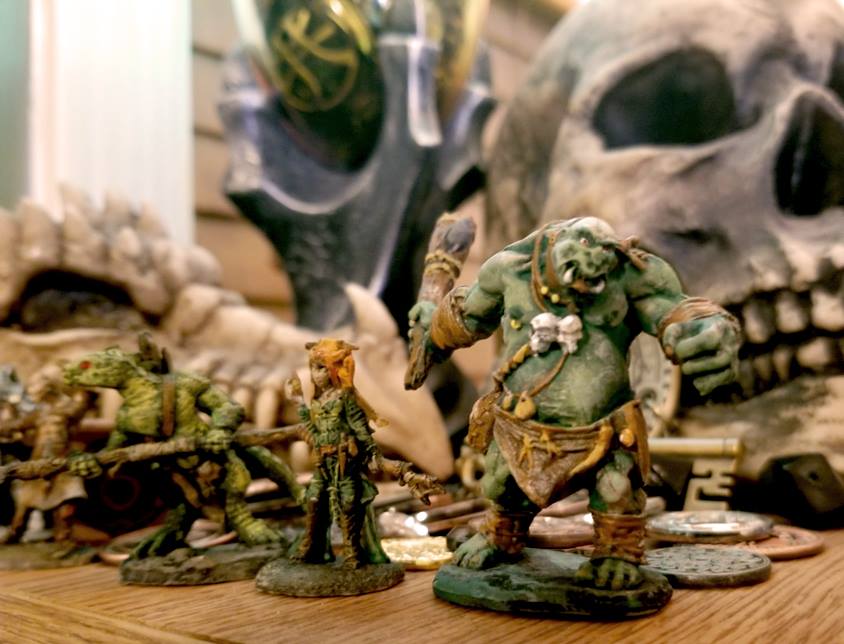

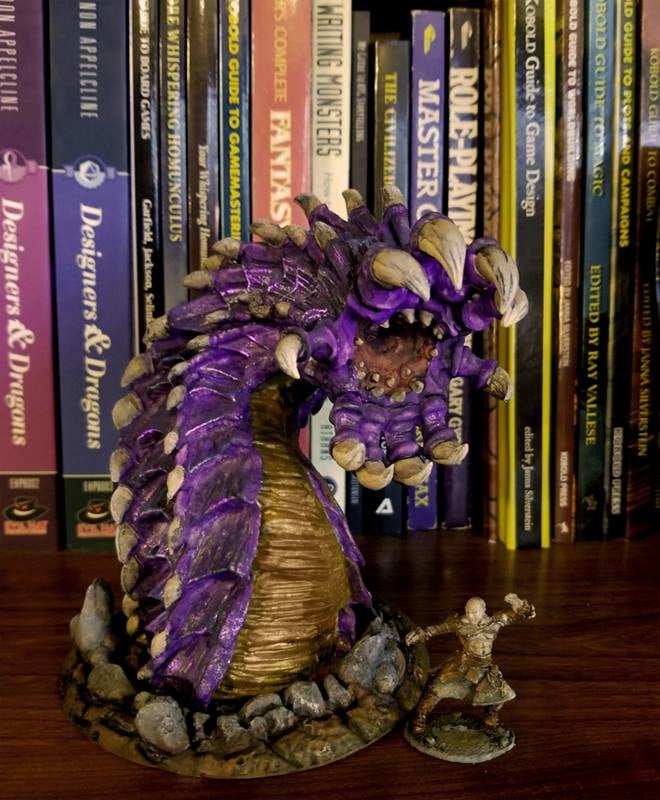
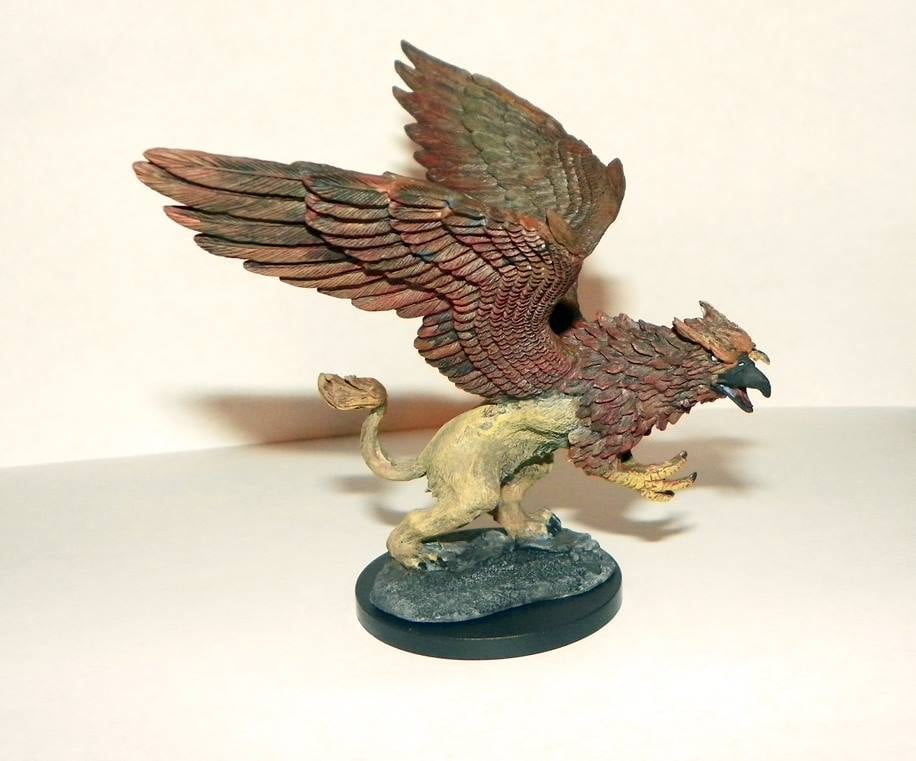
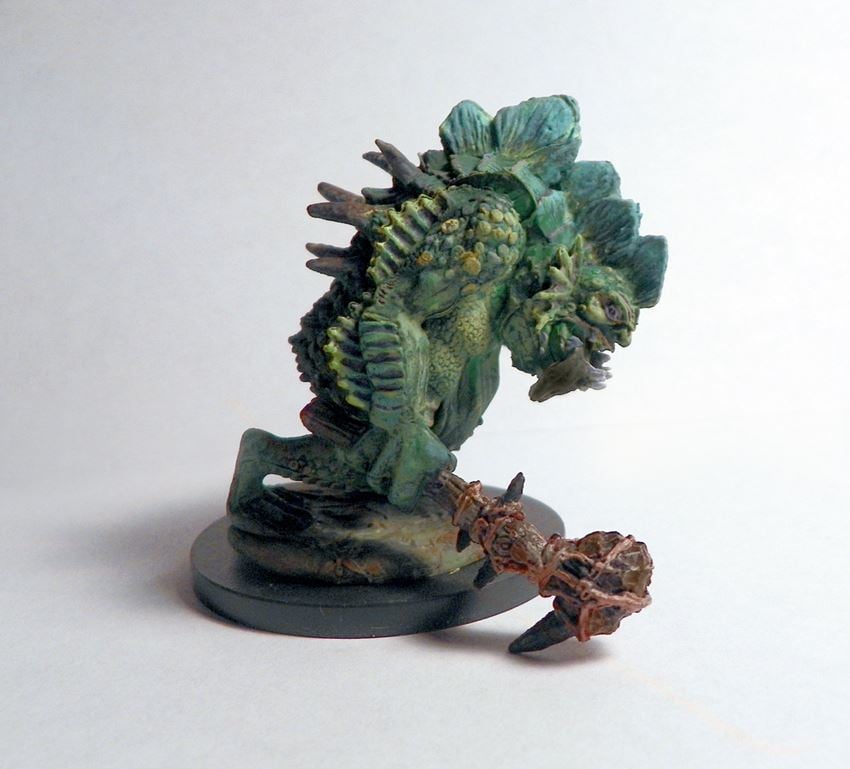
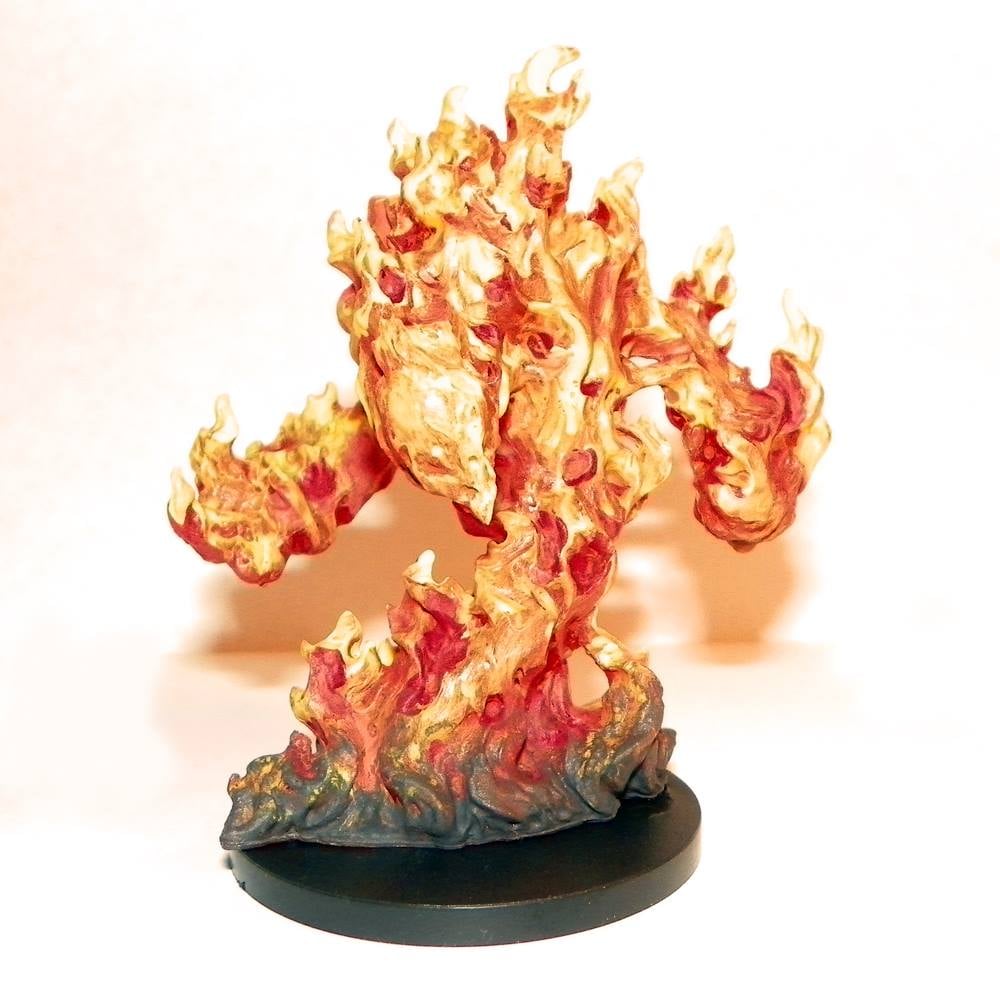
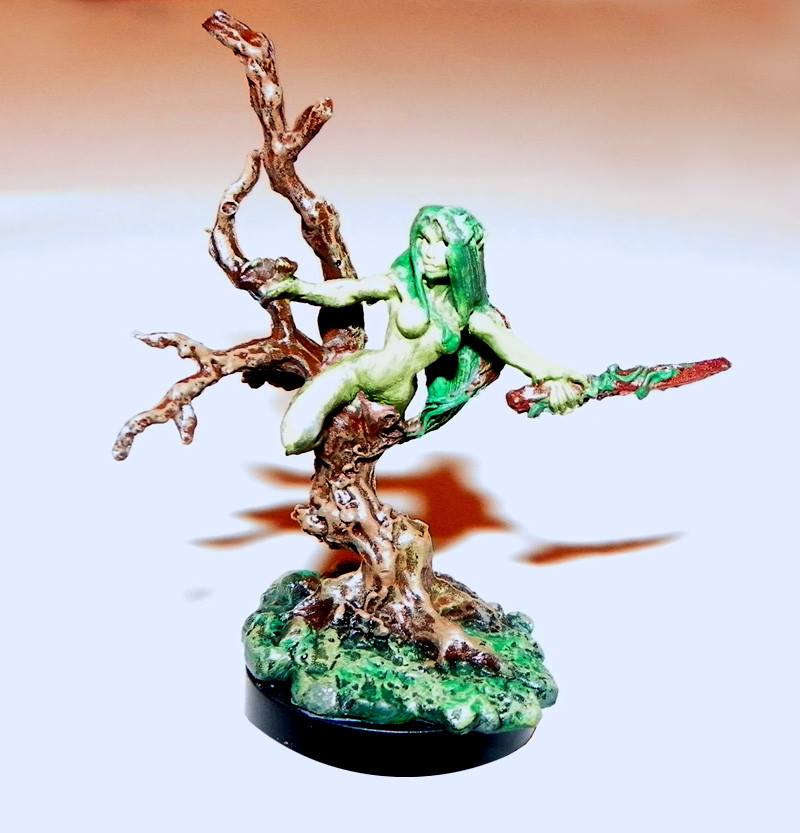
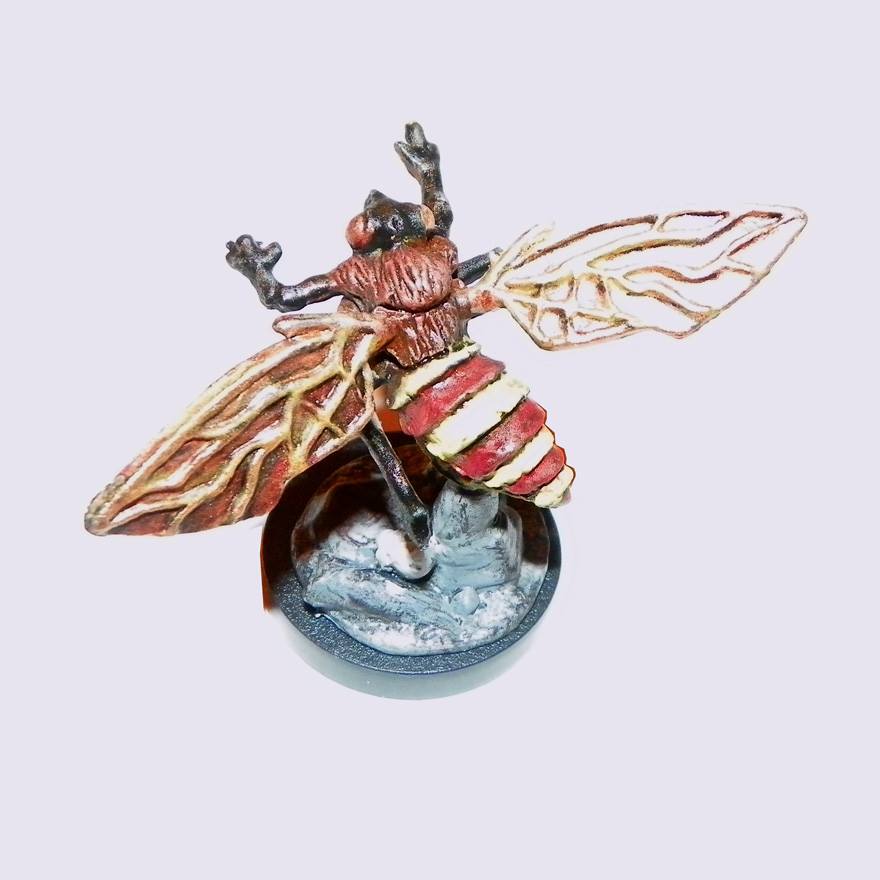
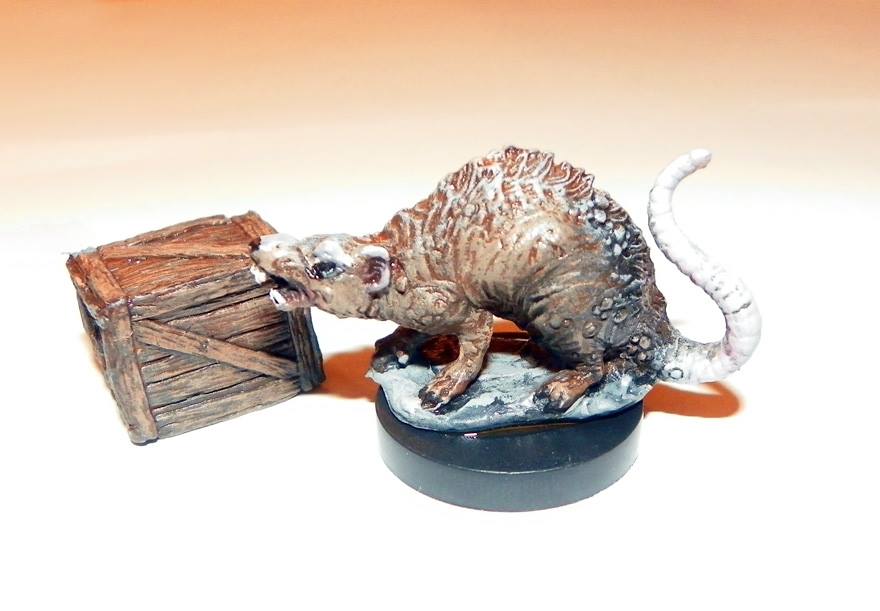
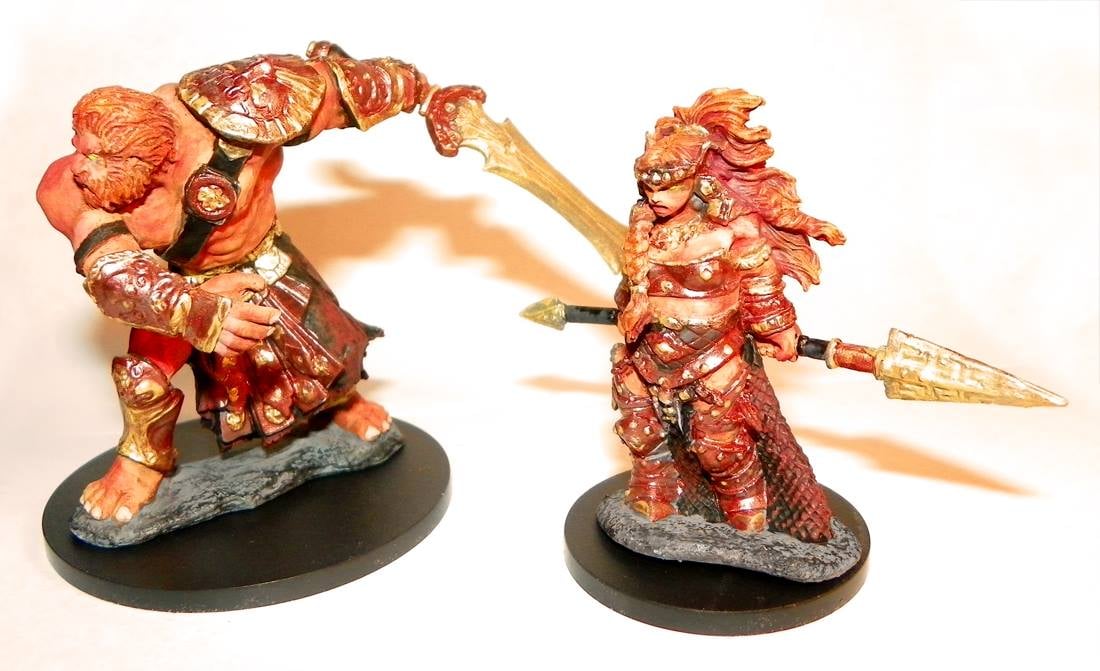
Hand-crafting & Painting Miniature Terrain
When I’m using terrain, I typically use pre-painted Dwarven Forge products. However, for one campaign I was running, I wanted to do something special for an epic moment in the game. I wanted to animate the great seal in the lair of the villain and I wanted it to glow in aurora colors.
After a bit of brain tweaking I ordered a $15 electric turntable display created for displaying jewelry, and one of those cheap phasing LED-illuminated carved-glass cubes. Combing the two into an underlying base, I used modling clay to create the flooring and the seal, primed it, painted it, and then inserted a few random crystal/gems I had laying around in my craft pile.
I thought for a game night project created on a whim, it turned out rather nicely. I had later created a circular base that housed the base, but I don’t think I ever got any pics of it all together.
Proving That Painting Miniatures Can Be Affordable
Some of the most affordable high-quality tabletop RPG miniatures available are Reaper Bones; with a price tag of about $3-$4 USD on average per figure. This means to build up a sizable campaign-ready collection of miniatures (about 300 including duplicates), you’re looking at investing about $900-$1,200 USD.
What if I told you that you could build the same size collection for under $50 USD? Allow me to introduce “bucket” action figure play sets — available from $10-$20/set which can include as many as 100 miniatures.
Yes, for the price of a box of cardboard pawns, you can have a huge collection of durable, three-dimensional, themed miniatures for your tabletop.
There are many varieties of these figures available on Amazon, and if you’re already a Prime member, you can look forward to scoring some free shipping as well.
I’ve recommended these play sets to folks seeking inexpensive miniatures for years, but before now I had never actually ordered any myself. I decided to do a bit of research and find out of my advice has been sound. It has. These things are highly detailed for their price point. They take well to primer for painting, are very durable, and you get a really decent assortment in each container.
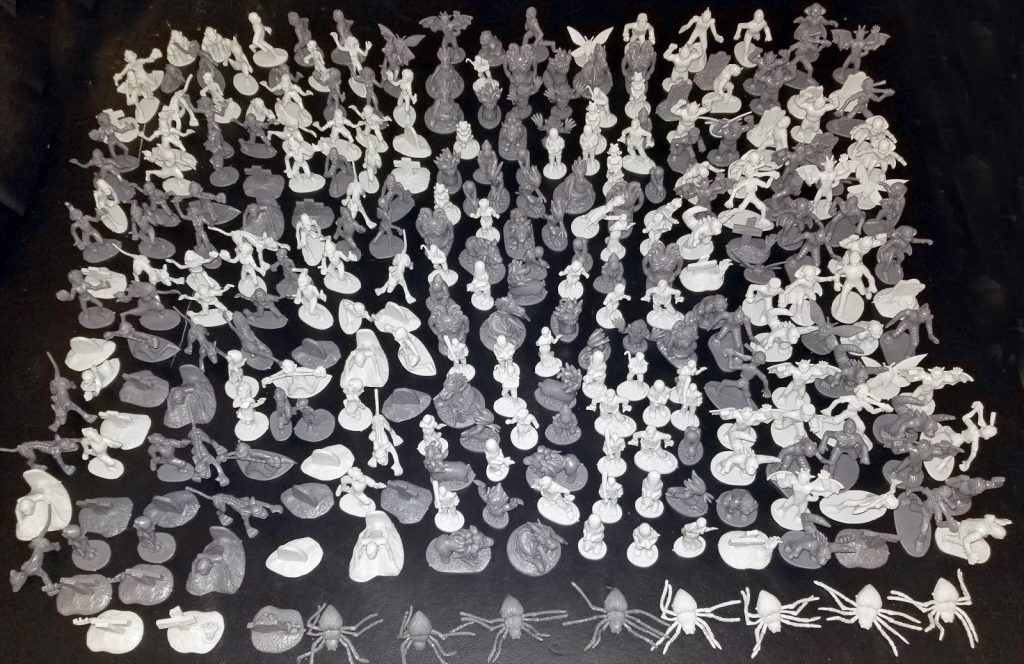
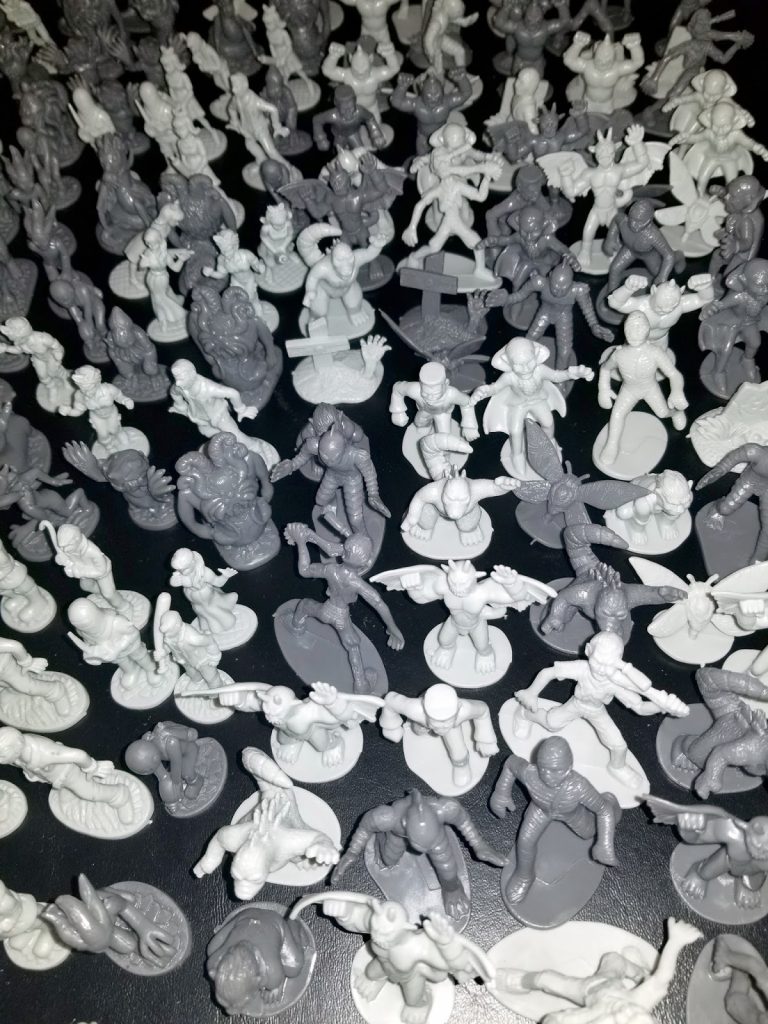
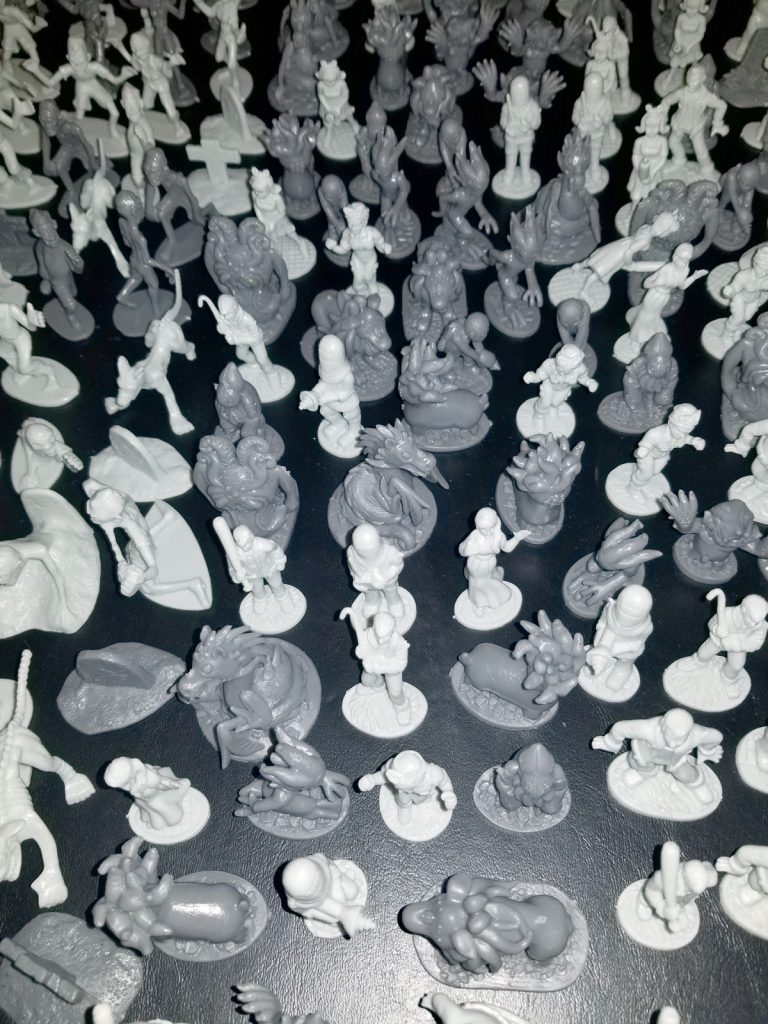
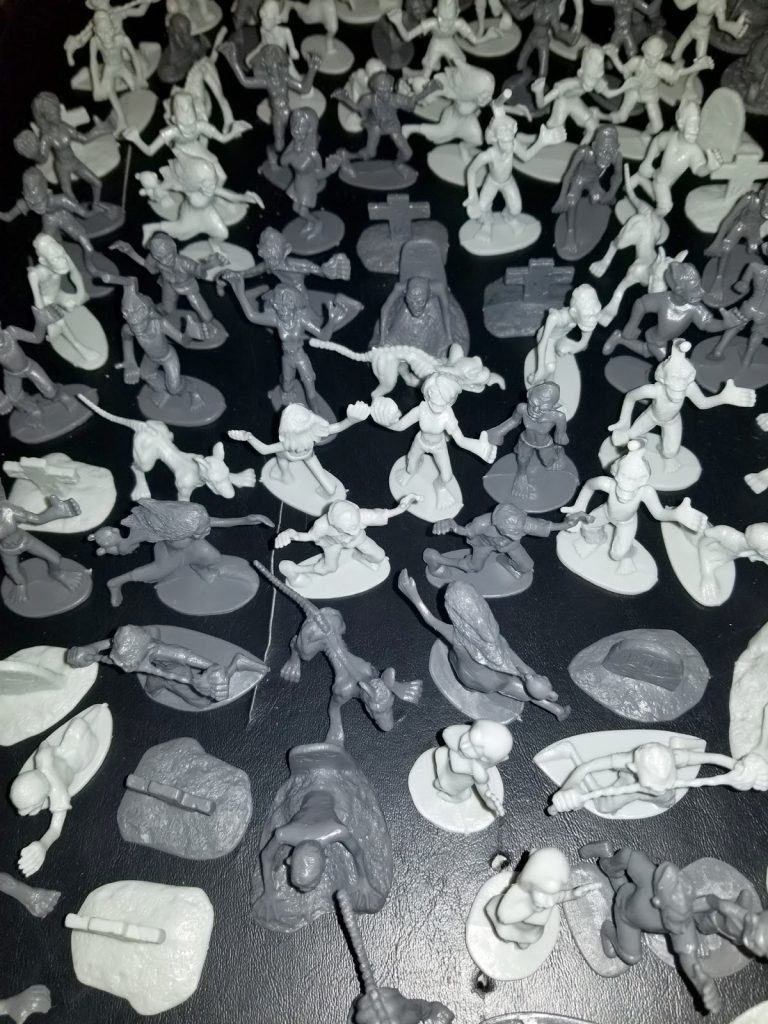
The play sets also include some terrain pieces (tombstones and graves in this case) that should also help to add some ambient scenery and scatter terrain to your tabletop play space. And, of course, as with any collection of tabletop RPG miniatures, the next logical step is painting them. The surprisingly fine detail of these figures provides a great depth with a little bit of wash and dry-brushing.
Aren’t Paints Expensive Too? Yes! Paints for miniatures can be very pricey (as much as $4-$6 USD for 0.5 oz). Professional sets can cost hundreds of dollars. But, fret not! While you won’t get the same flexibility with color that a professional paint set provides, you can get everything you need for miniature fun at the tabletop for under $20 USD.
For cost effective acrylic paint that works great on miniatures, I recommend Martha Stewart brand acrylic craft paint. There are probably other discount brands as well, but these are available at almost any craft shop, and typically cost around $2 USD each for 2.0 oz. A pack of detailing brushes will run you about another $5 USD.
There are literally hundreds of color options available in this inexpensive line of paints; each for the same low price. If you want to get fancy there are even high-gloss, glittery, and metallic versions for the same price.
However, when working on a tight budget, all you really need are the basics: black (x2), white, brown, red, yellow, green, cyan, blue, and magenta. By mixing colors, applying water, and creating wash — these bottles should last you through painting several hundred miniatures.
Note: I suggest getting two bottles of black paint since creating ink wash by watering it down tends to use it up more quickly.
And, here are a few all painted up. They stand just a tad bit taller than standard miniatures, but for 1/24th the cost, most of us budget-friendly gamers can deal with that.
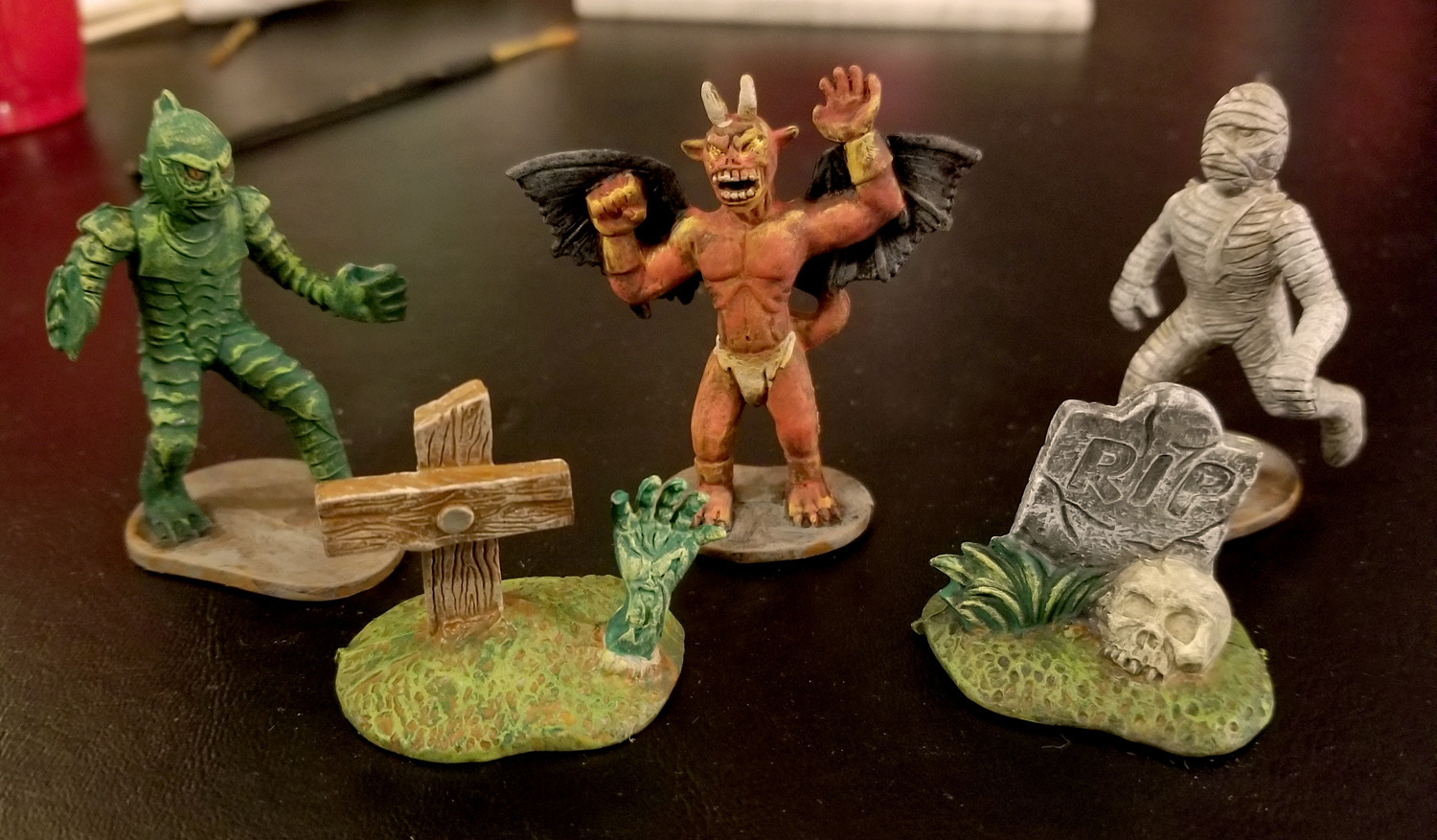
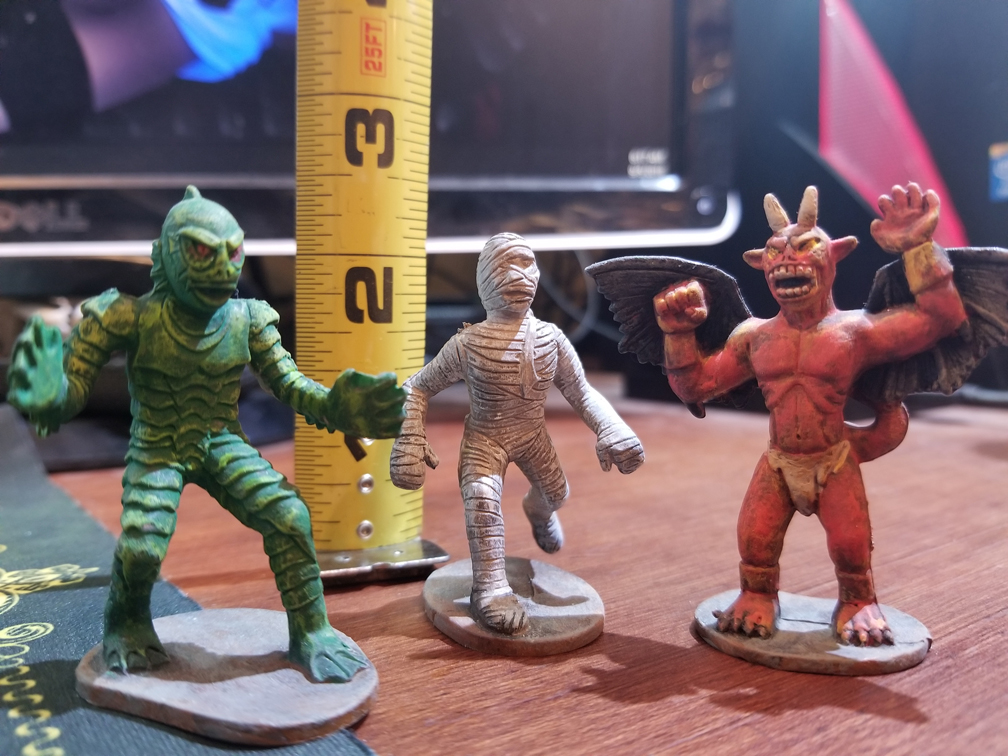

For a short while I ran a monthly miniature painting meet-up downstairs at my house for the local game crew and friends. The event was billed as an “official” event of the local gamer-networking group I had founded back in the early aughts called, “The Adventurers Guild for Tabletop Roleplaying; Hopkinsville, Kentucky Chapter” (it was the only chapter). The Miniature Mayhem was a sort of spin-off of the larger “Hoptown Game Nights” gatherings I frequently ran years earlier, which were like local gamer mini-conventions.
For the event, I supplied all the miniatures from my massive collection of unpainted Reaper Bones, all the paint, and the needed supplies. In addition to painting minis at the gatherings, I would cook out, prepare a stash of special-order snacks (energy drinks, snacks from Japan, etc.), and blast music while everyone painted and hung out. Rules were simple: pick any one miniature from the pile you want paint, and take it home with you at the end of the night to use at your own game table. Occasionally we’d do two miniatures if time permitted. Was a ton of fun.
The event (and essentially, also the guild) came to and end around the time the pandemic hit. Folks went their own ways, no one was gathering anymore, and I got focused on creative work. A return to a locally organized gamer group never really manifested again. All things considered, it was a nice farewell to the concept that persisted for well over a decade.

